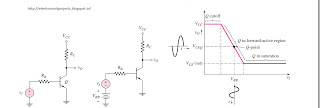ANALOG SIGNALS AND LINEAR AMPLIFIERS IN ELECTRONICS
Innovative Engineering Projects
we will be considering signals, analog circuits, and amplifiers. Asignal contains some type of information.
For example, sound waves produced by a speaking human contain the information the person is conveying to another person.
Our physical senses, such as hearing, vision, and touch, are naturally analog. Analog
signals can represent parameters such as temperature, pressure, and wind velocity.
Here, we are interested in electrical signals, such as the output signal from a compact
disc, a signal from a microphone, or a signal from a heart rate monitor. The electrical
signals are in the form of time-varying currents and voltages.
The magnitude of an analog signal can take on any value within limits and may vary continuously with time. Electronic circuits that process analog signals are called analog circuits. One example of an analog circuit is a linear amplifier. A linear amplifier magnifies an input signal and produces an output signal whose magnitude is larger and directly proportional to the input signal.
In many modern day systems, signals are processed, transmitted, or received in digital form. In order to produce an analog signal, these digital signals need to be processed through a digital-to-analog (D/A) converter. D/A and A/D (analog-to digital) converters are considered . In this chapter, we will assume that
we already have an analog signal that needs to be amplified.Time-varying signals from a particular source very often need to be amplified before the signal is capable of being “useful.” For example, Figure 6.1 shows a signal source that is the output of a compact disc system. We assume the signal source is the output of the D/A converter and this signal consists of a small time-varying voltage and current, which means the signal power is relatively small.
The power required to drive the speakers is larger than the output signal from the compact disc, so the compact disc signal must be amplified before it is capable of driving the speakers in order that sound can be heard. Other examples of signals that must be amplified before they are capable of driving loads include the output of a microphone, voice signals received on earth from an orbiting manned shuttle, video signals from
an orbiting weather satellite, and the output of an EKG.
Also shown in Figure 6.1 is a dc voltage source connected to the amplifier. The amplifier contains transistors that must be biased in the forward-active region so that the transistors can act as amplifying devices.


No comments:
Post a Comment